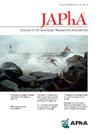Pharmacist portrayals in film and television media between 2013 and 2023
IF 2.5
4区 医学
Q3 PHARMACOLOGY & PHARMACY
Journal of the American Pharmacists Association
Pub Date : 2025-04-27
DOI:10.1016/j.japh.2025.102404
引用次数: 0
Abstract
Background
The pharmacy profession has experienced significant transformation over the last century. Despite the evolving role of pharmacists, public perception of the profession continues to be based on the traditional dispensing role pharmacists play in the community setting. Based on previously published literature, this study hypothesizes that modern film and television (TV) media continue to depict pharmacists predominantly in a negative light or in traditional dispensing roles, failing to reflect the profession's evolution.
Objective
This study aimed to highlight the discrepancies between the evolving roles of pharmacists and their portrayal in the media, providing insights for targeted advocacy and educational efforts to enhance public understanding of the pharmacy profession.
Design
A retrospective review was conducted of all pharmacist appearances in film and TV media published for viewing in the United States between August 1, 2013, and October 31, 2023.
Setting and participants
Each media entry was screened by 2 blinded independent reviewers using a standardized screening tool.
Outcome measures
The primary outcome was the categorization of pharmacist character portrayals. Secondary outcomes included pharmacist character demographics, practice setting of pharmacist portrayals, and categorization of character status.
Results
In total, 92 media entries with 71 unique pharmacist characters were included, with 32 (45.1%) and 39 (54.9%) appearing in film and TV shows, respectively. Negative portrayals were the most common (n = 44, 47.3%), followed by neutral (n = 29, 31.2%) and positive (n = 20, 21.5%). The most categorized character status was “none” (n = 54, 58.7%), followed by “villain” (n = 16, 17.4%), “hero” (n = 13, 14.1%), and “victim” (n = 9, 9.8%).
Conclusion
This study demonstrated that pharmacists have continued to be negatively portrayed in film and TV media over the past 10 years. The film/TV industry continues to inaccurately portray the profession, and this may be causing negative public perceptions of pharmacists.
2013 - 2023年电影和电视媒体中的药剂师形象。
背景:上个世纪,药学行业经历了重大变革。尽管药剂师的角色不断演变,但公众对该职业的看法仍然基于药剂师在社区环境中扮演的传统配药角色。基于先前发表的文献,本研究假设现代电影和电视(电视)媒体继续以负面的眼光和/或传统的配药角色描绘药剂师,未能反映该职业的演变。目的:强调药剂师的角色演变与他们在媒体上的描述之间的差异,为有针对性的宣传和教育工作提供见解,以提高公众对药剂师职业的理解。方法:回顾性分析2013年8月1日至2023年10月31日期间在美国出版观看的所有影视媒体中出现的药师。每个媒体条目由两名独立的盲法审稿人使用标准化的筛选工具进行筛选。主要结果是药剂师性格描述的分类。次要结局包括药师角色的人口统计学特征、药师描述的实践背景和角色状态的分类。结果:共纳入92个媒体条目,71个独特的药师角色,其中32个(45.1%)出现在影视剧中,39个(54.9%)出现在影视剧中。负面描述最为常见(n = 44, 47.3%),其次是中性描述(n = 29, 31.2%)和正面描述(n = 20, 21.5%)。分类最多的角色状态是“无”(n = 54, 58.7%),其次是“恶棍”(n = 16, 17.4%)、“英雄”(n = 13, 14.1%)和“受害者”(n = 9, 9.8%)。结论:本研究表明,近十年来,影视媒体对药师的负面形象持续存在。电影/电视行业继续不准确地描绘这个职业,这可能会导致公众对药剂师的负面看法。
本文章由计算机程序翻译,如有差异,请以英文原文为准。
求助全文
约1分钟内获得全文
求助全文
来源期刊
CiteScore
3.30
自引率
14.30%
发文量
336
审稿时长
46 days
期刊介绍:
The Journal of the American Pharmacists Association is the official peer-reviewed journal of the American Pharmacists Association (APhA), providing information on pharmaceutical care, drug therapy, diseases and other health issues, trends in pharmacy practice and therapeutics, informed opinion, and original research. JAPhA publishes original research, reviews, experiences, and opinion articles that link science to contemporary pharmacy practice to improve patient care.

 求助内容:
求助内容: 应助结果提醒方式:
应助结果提醒方式:


